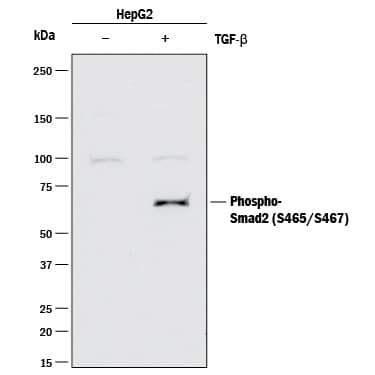Smad2/3 Products
Smads are a family of intracellular proteins that mediate signaling by members of the TGF-beta superfamily. Smads are divided into three distinct subgroups based on their different roles in TGF-beta family signal transduction: R-Smads (receptor-regulated), Co-Smads (common partner), and I-Smads (inhibitory). In general, activation of TGF-beta superfamily serine/threonine kinase receptors leads to the phosphorylation of R-Smads (Smads1, 2, 3, 5, and 8). This is followed by recruitment of the Co-Smad (Smad-4) into an R-Smad/Co-Smad complex that translocates to the nucleus to regulate gene expression. I-Smads (Smad6 and Smad7) antagonize this signaling pathway by preventing R-Smads from interacting with the receptor, or by competing with Co-Smads for the generation of R-Smad/Co-Smad complexes.
3 results for "Smad2/3" in Products
3 results for "Smad2/3" in Products
Smad2/3 Products
Smads are a family of intracellular proteins that mediate signaling by members of the TGF-beta superfamily. Smads are divided into three distinct subgroups based on their different roles in TGF-beta family signal transduction: R-Smads (receptor-regulated), Co-Smads (common partner), and I-Smads (inhibitory). In general, activation of TGF-beta superfamily serine/threonine kinase receptors leads to the phosphorylation of R-Smads (Smads1, 2, 3, 5, and 8). This is followed by recruitment of the Co-Smad (Smad-4) into an R-Smad/Co-Smad complex that translocates to the nucleus to regulate gene expression. I-Smads (Smad6 and Smad7) antagonize this signaling pathway by preventing R-Smads from interacting with the receptor, or by competing with Co-Smads for the generation of R-Smad/Co-Smad complexes.
| Reactivity: | Human, Mouse |
| Details: | Goat IgG Polyclonal |
| Applications: | WB, Simple Western, IHC, ChIP, ICC |
Recombinant Monoclonal Antibody.
| Reactivity: | Human |
| Details: | Rabbit IgG Monoclonal Clone #1074A |
| Applications: | WB |
| Reactivity: | Human, Mouse, Rat |
| Details: | Rabbit IgG Polyclonal |
| Applications: | WB |




![Western Blot: Smad2/3 AntibodyAzide and BSA Free [NBP3-15589] Western Blot: Smad2/3 AntibodyAzide and BSA Free [NBP3-15589]](https://resources.bio-techne.com/images/products/Smad2-3-Antibody-Western-Blot-NBP3-15589-img0001.jpg)